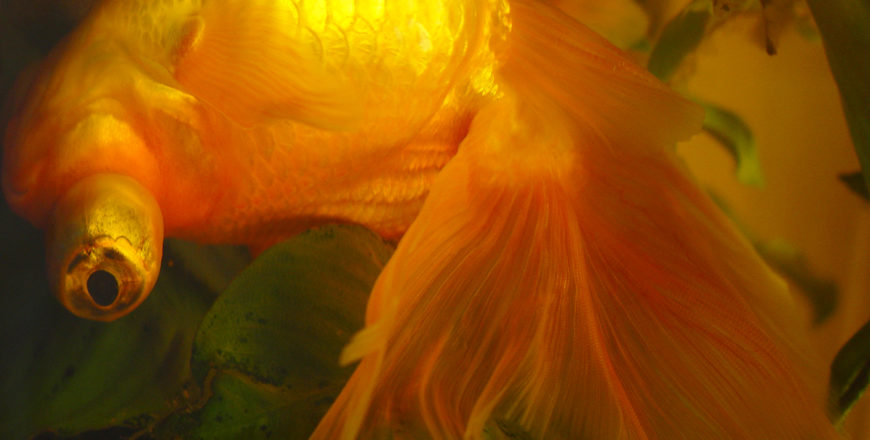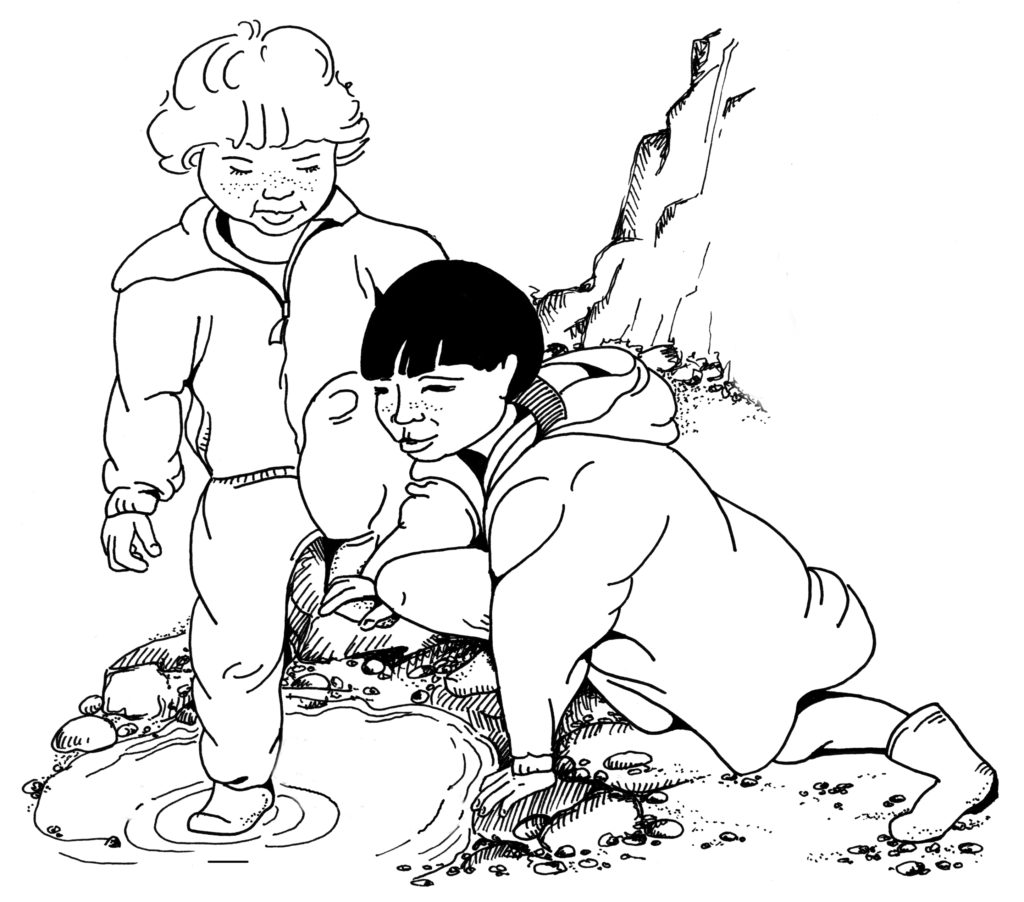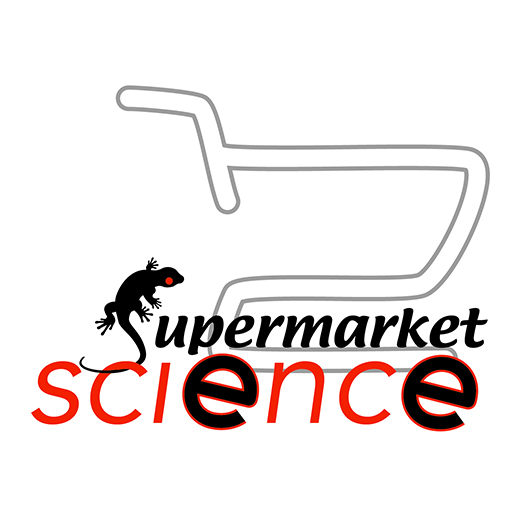Water

Supermarket Science Materials are organized into thematically linked sets with experiments and activities as well as background information that makes them easier to do. There are also a bunch of simple, fun art and writing projects. All of the activities can be done alone or in conjunction with other project sets. Choose activities that are developmentally appropriate for your children.
All Supermarket Science Materials are primarily geared toward students in elementary and secondary schools, as well as their parents and teachers, but can be expanded to higher grades. The activities are designed to advance the understanding of concepts of biology, ecology, geology, and sociology based on local resources like a backyard or a local grocery store. All of the materials in this set and others link the Core Curriculum Standards. Use these Standards to focus the activities to a particular grade level.
There are also LEARN, SHOW, USE, DO, and TEACH pages. LEARN pages are designed to be printed out and given to the kids. They contain explanations, stories, or diagrams. SHOW pages usually present interesting photographs or illustrations that demonstrate specific concepts. USE pages are created as supplemental materials for the activities and experiments. Animal Cards and Map Cards are examples of USE pages. And finally, the DO pages contain the actual activities and experiments—please print as many copies as you need and give them to your children. Please use the back of these pages as scrap and add additional pages as needed.
On some pages, there are icons of animals. For example, an activity about elephants might have an elephant icon next to it. These icons can be used as keys to link information between all of the Supermarket Science Materials.
Most DO pages have a What You Need list of items in the margin under the title of the activity. This is a quick reminder of what children should have while doing the activity. It might look something like a list on the right: Animal Stamps pages, Animal Cards pages, research books, pencil, scissors, glue, etc.
Some of the activities use of cards from the Supermarket Science Cards or Stamps USE pages. Creating taxonomies is part of the scientific process. Card games and activities allow kids an opportunity to practice this skill.
There are many activities which can be done on the importance of water. This set shows some possibilities. We encourage you to come up with others. Think of these activities as inspirational examples, jumping off points.

Summary and Main Ideas
These activities and experiments focus on the chemistry and composition of water. What does it mean when we say the water is clean? Water can look crystal clear and still be deadly if consumed by people. Clean-looking water can be safe to drink but taste terrible. This course introduces students to water contaminants and their sources. Students will learn about the Nitrogen Cycle and perform a series of tests on water from various sources and on household liquids (e.g.: juice, vinegar, soap).
We hope that these materials will teach you something new and make this subject enjoyable to your children as well. For more activities and suggestions by teachers and parents on how to explore this material with kids, visit Supermarket Science web site at SupermarketScience.com.
Research
- Research is the basic tool of well-educated people. While engaging with Supermarket Science Activities, kids learn how to conduct and think about research in general and how to look up basic information about water in a library or the Internet. USGS is a good resource. To learn more about watersheds, please visit USGS website.
Precision
- Each label, name, or word has a specific meaning that all scientists in the same field understand to mean exactly the same thing.
- Descriptions of objects and events need to be precise enough to limit misunderstanding or misinterpretation by the readers as much as possible.
- “Fuzzy thinking” is not allowed!
Logical Thinking
- There two pathways in science: deduction and induction. Deduction is a process that puts together bits of data and evidence to build a theory—it’s bottom up reasoning. Induction is the process that starts with an idea and then looks for data and evidence to support it—it’s top down reasoning.
- Logical reasoning is a formal way of thinking (usually deductive) where each successive thought is built upon the previous one; as long as each link is a chain of logical reasoning is true, the end conclusion is true.
Water Contaminants
- There are two types of water contaminants: biological and chemical.
- Contaminants can be introduced into water by people or through natural processes.
- Contaminants can be dangerous or benign.
Water Quality and Testing
- pH test kits provide a readily available and easily performed set of water tests that can be used in the classroom. pH test kits usually test for: pH, hardness, buffering capacity, and Nitrate and Nitrite abundance.
- pH is a 14 point measure of liquid’s acidity, with 7 being a neutral value.
- Hardness measures the amount of dissolved metals in the water. For an interesting article on water harness, please visit this article.
- Buffering capacity measures the water’s ability to resist changes in its pH as the result of addition of acidic or basic contaminants.
- Abundance of Nitrate and Nitrite measures the health of the Nitrogen Cycle of the water.
- Temperature is another easily measurable quality of water, but it is only useful if obtained on site (i.e. directly from a river or a pond).
- Clarity of water is an important but difficult to measure quality, especially in a classroom setting.
Water Treatment
- There is a limited amount of clean, fresh water—clean, fresh water is a natural resource and it needs to be conserved.
- Water has to undergo a treatment process before it is fit for human consumption. People designed and built water treatment, distillation, and desalinization plants to make water potable.
Even when the water looks completely clear, it may be contaminated. There are two classes of contaminants: chemical and biological.
"Life Cycle of a Mosquito"— a 3-minute long video by MeitY OLabs
Mosquito Larva Video, 30 seconds
A short video of hydra under the microscope at various levels of magnification.
Hydra are animals in the phylum cnidaria which includes jellyfish, sea anemones, and corals. They are found in freshwater environments all over the world.
Notice little copepods at about 3 minutes into the video.
